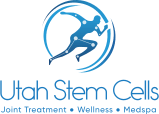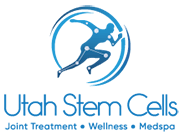How Stem Cells Function and Ethical Concerns About Them
Our own medical director, Dr. William Cimikoski of Utah Stem Cells sat down with host Drew Manning of the Fit2Fat2Fit Experience podcast to discuss many health science topics, and stem cells were a big conversational piece. One part of their interesting conversation revolved around how stem cells function and ethical concerns about them, and there were important points made that we wanted to flesh out.
Stem cell treatment busted onto the mainstream stage with controversy, as Christopher Reeves was the focal point on if stem cells should be legal to use on patients or not, and there were many congressional hearings that debated their application and safety. It was trials and tribulations such as these that really hindered the growth of stem cell use with lots of push back from governing bodies.
Dr.Cimikoski was a Stem Cell Pioneer in Utah
Dr.Cimikoski started doing stem cell treatments with his patients some 10 years ago and was about the only medical doctor in Utah at the time actively doing them. He believed in the value of stem cell treatment early on, and now the industry has exploded with many medically trained personnel doing procedures across not only America but the world as well.
Stem Cells in Us
Stem cell treatment is fascinating because wherever there may be damage done within the body, those cells are deployed to heal the particular body part and they essentially morph into whatever cells they need to be. For example, if a patient has a sprained ankle and stem cell treatment is used, the stem cells that are injected into the ankle region to more quickly repair the ankle go on to become ligament cells. Stem cells are essentially the equivalent to a joker in certain card games – they can become anything they need to be, so in their case, they can morph into any type of cell depending on where they find themselves within the body. Anything in the body that’s damaged naturally uses its own stem cells with the body alerting these cells to go to the area affected and heal itself.
Have you ever wondered why younger people heal quicker than older people? It’s because younger stem cells are better than older stem cells, so a 5-year old is going to recover much quicker than someone who’s 80 years old. Older people still do heal but their timetables for healing are longer than those who are more youthful.
Which Stem Cells Are Ideal?
Placental and Umbilical cord stem cells are ideal to be used for treatment procedures. Stem cells originating from these two delicate areas have healing and growth factors that aren’t found in other stem cells, so the results are optimal for the patients who receive them. A drawback with placental stem cells is that the quantity of them is low – so they are more about quality than anything else. Overall, umbilical core stem cells are the most coveted of any stem cells and are often used together with placental stem cells to take advantage of each of their native qualities to deliver the best of both worlds.
Fatty tissue and bone marrow stem cells used to be the most popular stem cells used in treatments, but after further research proved that placental and umbilical cord stem cells were superior to them, these are now the most derived and used when available. One’s own body produces the best stem cells for him or her because when stem cells are brought in from another body they can be rejected for several reasons and fail to register effective healing results.
Ethical Concerns About Stem Cells
The stem cell treatment industry has become very lucrative, and this has led to improper purchasing and use of them for patients. Some acupuncture and chiropractor clinics are using stem cells on their patients by hiring doctors and nurses to administer them, but patients should be wary of this approach. Medical doctors who are regenerative specialists should be the only type of doctors to administer stem cell treatments as they are properly trained, unlike many of these clinics who are doing these treatments more to make money than actually else. Sure these treatments at these places can work fine, but chances are more treatments are needed due to lower quality stem cells being used, and the injection sites not being perfect so the stem cells don’t take to the area as well as they should.
In fact, some doctors and nurses are being trained on how to administer stem cells over the course of a weekend, and that just simply isn’t enough training for proper qualification for use. Regenerative specialists have higher treatment standards, and their results are evidence. Dr.Cimikoski has had patients come to him after receiving inadequate stem cell treatment and wanting to have the job done properly the second time around. A horseshoe-approach can work with stem cells where they will find where they are supposed to go, but each area of the body has specific places where it should be treated to maximize their use. Quality stem cells are expensive, but Dr.Cimikoski and other regenerative specialists pay the higher price to benefit their patients as quickly as they can with treatment. Thinking first about a patient’s well being and recovery schedule should be the first priority of stem cell treatment, ahead of the dollars and cents.


